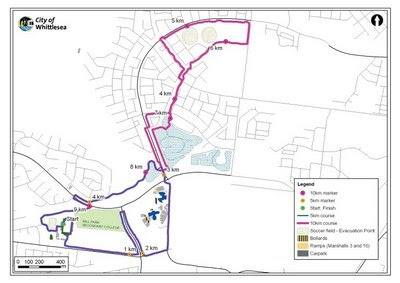Jerry Can
The first of Threshold training has been covered. Eight days, over the holiday period. The extras required in this time meant I missed two easy runs, but I got in all the key training. Christmas day was a planned day off, but I missed the extra day, due to travelling up to Murray for a few days away. The time away from home and work was great. Nothing beats a change in scenary. Otherwise all training has been smooth. The medium run was 83 minutes of solid, sub-threshold running. Felt great during it, slightly heavy the next day. The so-called steady run at about 85-90%HRmax was two intervals of 20 and 10 minutes over the red dirt up next to the Murray river. A nice hard run at the time, but the recovery was better than hoped. While up north I was away from my usual weights. No problem, with a bit of lateral thinking and some input from the other guys we fashioned a solid strength session using jerry cans, sling-rings and a lump of wood with a spotlight attached.




